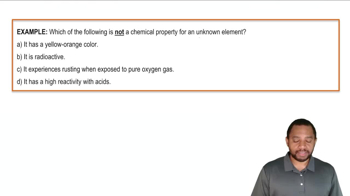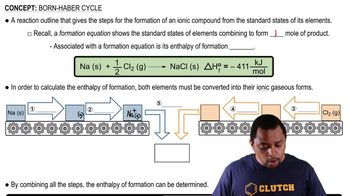You are working with an artist who has been commissioned to make a sculpture for a big city in the eastern United States. The artist is wondering what material to use to make her sculpture because she has heard that acid rain in the eastern United States might destroy it over time. You take samples of granite, marble, bronze, and other materials, and place them outdoors for a long time in the big city. You periodically examine the appearance and measure the mass of the samples. (a) What observations would lead you to conclude that one or more of the materials are well- suited for the sculpture?
In the following instances, which choice is greener in a chemical process and why? (b) A reagent for the reaction that can be obtained from corn husks or one that is obtained from petroleum. (c) A process that produces no by-products or one in which the by-products are recycled for another process.
 Verified step by step guidance
Verified step by step guidanceKey Concepts
Green Chemistry Principles

Sustainability in Chemical Processes

Life Cycle Assessment (LCA)

You are working with an artist who has been commissioned to make a sculpture for a big city in the eastern United States. The artist is wondering what material to use to make her sculpture because she has heard that acid rain in the eastern United States might destroy it over time. You take samples of granite, marble, bronze, and other materials, and place them outdoors for a long time in the big city. You periodically examine the appearance and measure the mass of the samples. (b) What chemical process (or processes) is (are) the most likely responsible for any observed changes in the materials? [Section 18.2]
Where does the energy come from to evaporate the esti- mated 425,000 km3 of water that annually leaves the oceans, as illustrated here? [Section 18.3]
(a) What is the primary basis for the division of the atmosphere into different regions?
(b) Name the regions of the atmosphere, indicating the altitude interval for each one.
